The textile industry has yarn as its backbone, with its origin tracing back centuries. It has been made throughout civilization by first twisting raw fibers into strands and then weaving them into sheets. The technique of transforming it by means of twisting fiber is known as spinning. The following article details the critical steps that turn raw materials into this essential product, which is used in our everyday lives.

The basic principles of spinning
1. Decompressing, Opening, and Cleaning Cotton
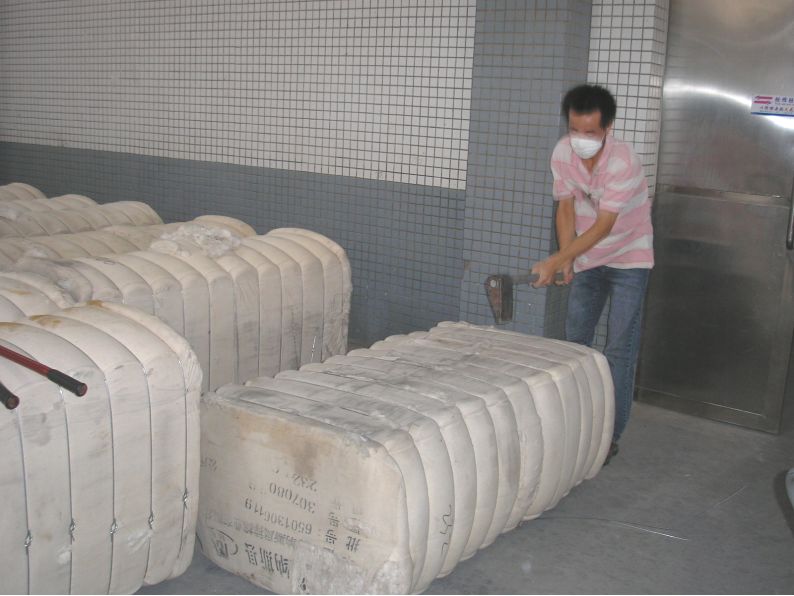
Decompressing, Opening, and Cleaning Cotton
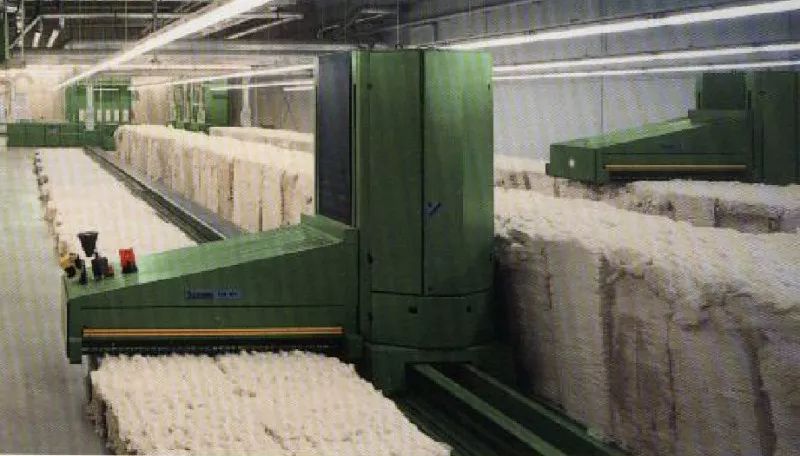
Straight-type plucking machine
The first step in the yarn making process is opening up and cleaning raw fibers. The compressed bales of it, whether made from cotton or synthetic fibers tend to be cleaned out by splitting them into less bulky fibers. This step is important so as to remove the dirt and extra substances that may have been mixed in with the fibers.
- Opening – opening the compacted fiber bales into small pieces or fiber bundles.
- Impurity removal – removing some impurities from the raw materials.
- Blending – mixing fibers of various properties evenly.
- Rolling – making uniform fiber rolls for use in the carding process.
2. Carding
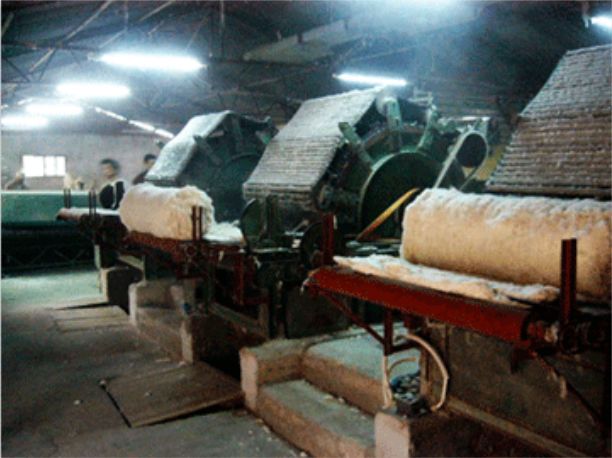
The cotton laps from the blow room process are fed to the carding machine
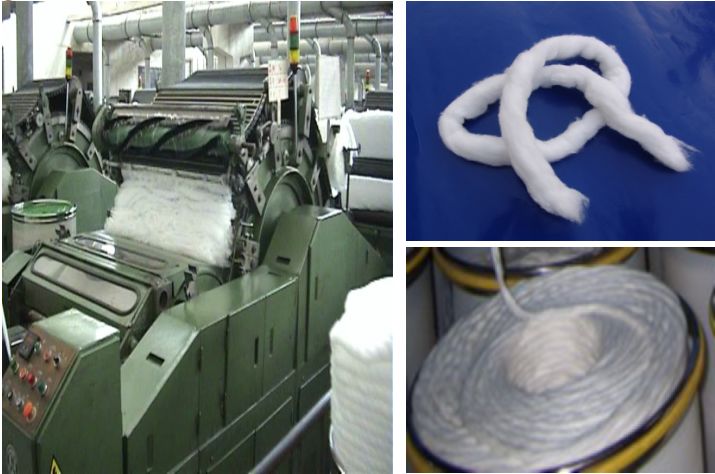
Coarse yarn
The fibers were started by being opened and cleaned, and they were then inserted into a carding machine, into which they are again tended to straightened. The fibers are now transformed into a carded sliver, which is defined as a defibrated material in a thin, seamless web. This is to the it that is required.
- Carding – obtaining single fibers
- De-imputation – removing impurities and short fibers
- Blending – blending single fibers
- Slivering – making uniform slivers
3.Drawing and slivering
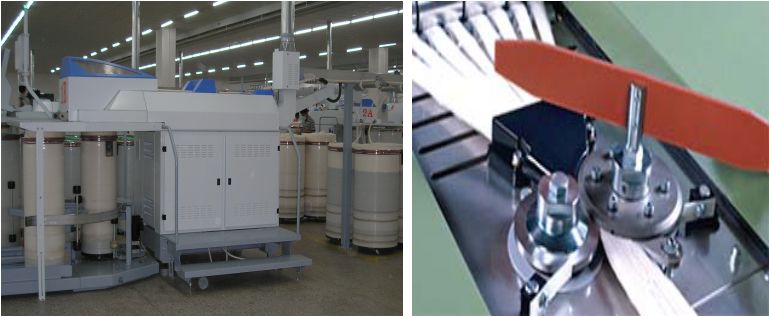
Main tasks
To improve the uniformity of the slivers, 6 to 8 slivers are combined and fed into the drawing machine, and one sliver is obtained by roller drawing.
Smoothing – improving the uniformity of the slivers to obtain more uniform and consistent yarns;
Parallelism – striving to make the fibers in the slivers straighter and more parallel;
Mixing – mixing various fibers as required;
Slivering – filling the sliver barrels in strips as required for the next production process.
4. Drawing and Roving
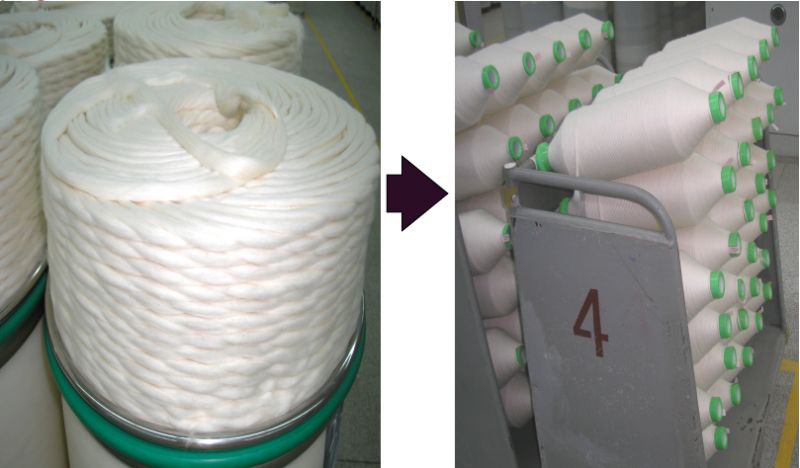
Drawing and Roving
Moving forward, the sliver is drawn from the carded fabric and converted into roving. Drawing is when the sliver is made thinner by stretching it, whilst roving is a stage between slivering and spinning the fibers into yarn.
- Drafting: A sliver drafted roving system pulls out the sliver consisting of a sled and rollers that allow for fiber to be overstretched while concurrently preventing them from becoming disentangled.
- Twisting: A light amount of twisting binds the fibers.
- Winding – Winding the twisted roving onto a bobbin.
5. Spinning of yarn
The spinning process is known to be the main stage in the consistency production process, and this will also allow the Roving to be twisted into a finer, stronger yarn. This is achieved through rollers and spindles that are responsible to add twist to the fibers, remembering that newer designed spindles can improve the durability of the fibers to be used.
- Stretching : Further in thickness stretching is achieved for the desired effect to be realized.
- Twisting: Apply the last twist after the yarn is spun to make the yarn stronger and more stabile.
- Winding: Finally, the spun yarn is wound on to cones/bobbins which are ready to be used in textile manufacturing.
6. Plying
Plying is combining two or more yarns in the twisting format to develop a stronger and thicker yarn. This is especially critical while developing multi-ply yarns that would serve the purpose of providing more strength and durability on various types of fabrics.
- Twisting Together: The yarns for instance, are all twisted together in different directions so as to combine them into a balanced strong yarn.
- Final Inspection: This yarn is visually as well as structurally examined for thickness, strength and texure uniformity, ideal for the specified engineering application.
7. Ending
The last step in spinning yarn involves performing finishing processes that enhance the usability and aesthetic appeal of the yarn. Such steps may include washing, dyeing, and applying other coatings to Strand to enhance its quality and usability.
- Washing: This is the cleans up process where the yarn is washed to eliminate oils, residues, and any contaminants from the spinning process.
- Dyeing: In the case the required Strand color cannot be achieved, dyeing helps to obtain the desired shade throughout the yarn.
- Coating: Additionally, a coating or finish may be applied to impart the yarn softness, water repellant properties, or retardancy to flame.
Conclusion
The entire process of manufacturing yarn is an amalgamation of interlinked activities ranging from cleaning, carding, spinning and plying with the aim of achieving specific quality to consistency. The end product in this entire process is a Strand used as the main input in the textile manufacturing industry be it for clothes, furniture or industrial purposes. With all the factors that go into Strand making, one can see how and why this material is in such high demand as it has great application in the textile industry after understanding the stages of its production.
Gaining knowledge pertinent to Strand making one can realize that it does not solely include making yarns by turning fibers into thin strings. It is much more complex as it requires the right amount of mix of strength, softness and an appropriate texture which when combined together provides Strand that can be used for knitting a sweater, weaving and making a blanket and the list goes on.
Previous News
Top 8 Uses of Polyester Spun Yarn in Household ...Next News
Top 8 major uses of Polyester Spun Yarn in the ...
By Yarn
Feature Product
-
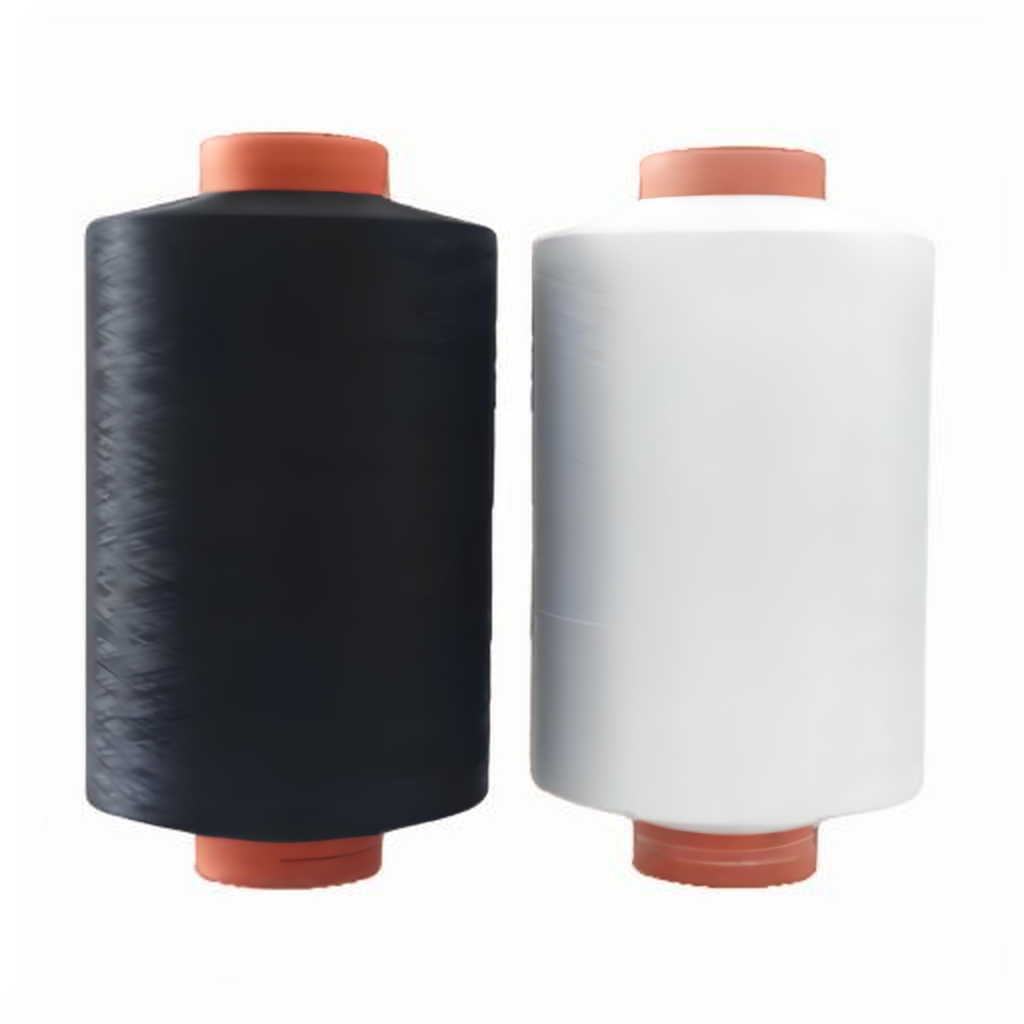 DTY 100D/144F Polyester Yarn
DTY 100D/144F Polyester YarnDTY 100D/144F Polyester Yarn: The Ultimate Guid...
-
 DTY 100D/96F Polyester Yarn
DTY 100D/96F Polyester YarnDTY 100D/96F Polyester Yarn: The Soft, Stable S...
-
 DTY 75D/144F SIM Polyester Yarn
DTY 75D/144F SIM Polyester YarnDTY 75D/144F SIM Polyester Yarn: A Top Choice f...